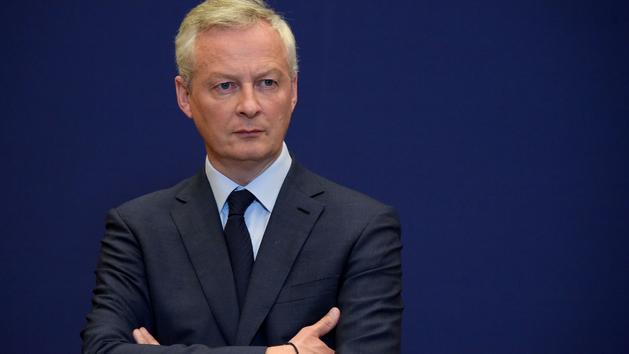And three. After a first amending finance law adopted in March, a few days after the start of confinement, followed by a second in April, the government presented, on Wednesday, a third PLFR (amending finance bill) in the Council of Ministers . The latter must take into account the evolution of the economic situation, as well as the various sectoral plans announced in recent weeks. Summary of main points.
Also read: Deconfinement: restaurateurs in a hurry to reopen normally
- Many aids taken into account
For Bruno Le Maire, “ the gravity of the crisis calls for a massive and immediate response. All the sums devoted to this response represent 460 billion euros, or 20% of French national wealth "or the equivalent of the Austrian GNP, against" only "a little more than 400 billion euros forecast in the last amending finance bills. This increase is explained by several plans announced recently, for aeronautics (15 billion), tourism (18 billion), French Tech (1.2 billion) or even the automobile (8 billion). In addition to this kitty, aid for the book sector (" more than 230 million euros", According to the Minister of Culture Franck Riester), building and small trade. Some of these latter measures are under discussion and will be clarified during the parliamentary debate. The State is for example " ready to take charge " of the additional costs generated by the health rules on construction sites, said the boss of Bercy.
The plans unveiled in recent days must " support a number of the most threatened sectors, and with them hundreds of thousands of jobs ." In the longer term, the government hopes to be able to take advantage of the crisis to " accelerate the transformation of these sectors ", "to prepare for the post-crisis and with the most efficient industrial fabric possible ".
- Growth
In mid-March, the executive expected growth to -1% in 2020. A forecast considered cautious at the time, which has continued to deteriorate since, reaching -8% in the last PLFR. Henceforth, the Banque de France assumes that the GDP will drop by around 10% this year, while the government is talking about -11%, a drop caused in particular by the fears of households, who prefer to save massively rather than consume . Household savings should explode, the rate could drop to 23.2% at the end of the year, compared to 14.9% in 2019.
- Deficit
While the first PLFR forecast a public deficit of -3.9% instead of the -2.2% initially expected by the government for 2020, this third text confirms the heavier bill for public accounts. The deficit should jump to -11.4% of GDP, well beyond the limit levels set by Brussels. However, the structural deficit would remain limited to 2.2 percentage points of GDP, most of the measures being temporary. The state budget deficit should ultimately climb to “ 222 billion euros ”, when that of Social Security will reach “ 51 billion euros ”, according to Gérald Darmanin.
In addition, " the public expenditure ratio would be revised up sharply [...] It would stand at 63.6% of GDP, excluding tax credits. Public spending would thus increase by 6.4% in value in 2020, after 2.3% in 2019 ”.
- Public debt
One thing is certain: public debt will reach a level never seen before. Bercy forecasts debt representing 120.9% of GDP, a spectacular jump compared to the 98.1% recorded at the end of 2019. The debt forecast has not stopped increasing, going from 98.7% in the PLF for 2020 to 102.9% in the first PLFR, 115.2% in the second and more than 120% in the latter text. The final level could be even higher, as certain measures were not taken into account in this third PLFR. "Since the creation of the euro in 1999 and until last year, such a level of debt had only been reached within the euro zone by very few countries, " recalls the High Council for public finances this Wednesday.
- Employment
Again, big weather notice. Bercy expects a " significant decline in total employment " in 2020, of the order of -2.8%, or 800,000 net jobs less, according to the High Council for Public Finance. These losses are however limited by the success of the partial unemployment scheme, in force for several months.
PLFR3 therefore notably contains " massive measures to support learning ". Others are " in negotiation, like partial activity ", which must make it possible to avoid " social tragedies and a loss of human capital ".
- Alert on the finances of France
The massive increase in debt and deficit weakens " the medium-term sustainability of France's public finances and calls for particular vigilance ," warned the High Council for Public Finance. In a notice released to the public on Wednesday, the institution calls on the executive to control the massive increase in debt and deficit, which are reaching a level " never seen since the Second World War ". The coming months will be difficult: more bankruptcies, lower investment, difficulties that will persist in certain sectors, wait-and-see behavior by consumers, weak tourist flows ... These are all elements that may limit the outlook.
The High Council is however less cautious than the government on certain points. First, he explains that “ a continuation of the favorable development of the health context and a stronger use in the second half than retained in the government's hypotheses of constrained savings accumulated by households could lead to a less marked recession »Than the 11% provided for in PLFR3. Then, " employment could be a little higher than expected ", depending on the development of the economy.
For its part, the government recalls that will then come " the national recovery plan ": " the economy can emerge stronger, competitive and sustainable from the economic crisis ", thanks, for example, to relocations, the head of Bercy. This last question will be dealt with in the recovery plan and will have to be based on several researches aimed at determining the sectors to be relocated, in which France has " technologies and know-how " to put forward. The Minister notably cited the example of the “ electric car ”, “ quantum calculus ” or “ hydrogen ”.









